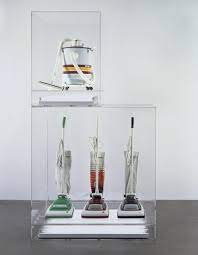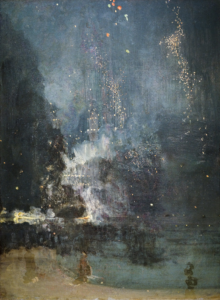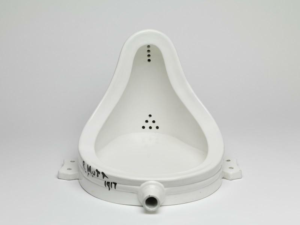“We are always sons of our works.”
“Cada uno es hijo de sus obras.”
― MIGUEL DE CERVANTÈS in spanish MIGUEL DE CERVANTES SAAVEDRA
(Alcalá de Henares 1547 – Madrid 1616)
Don Quichotte, I, 4
 Jeff Koons (b. 1955) began exhibiting elegant minimalist arrangements of consumer goods in a small independent gallery with Peter Halley, Meyer Vaisman and Ashley Bickerton in 1985. Within a year, he had grown to a top-notch establishment in SoHo. New Hoover is typical of these early sculptures in its clear, gridded composition and its willingness to let the new materials attach to the commercial products for which they were intended.
Jeff Koons (b. 1955) began exhibiting elegant minimalist arrangements of consumer goods in a small independent gallery with Peter Halley, Meyer Vaisman and Ashley Bickerton in 1985. Within a year, he had grown to a top-notch establishment in SoHo. New Hoover is typical of these early sculptures in its clear, gridded composition and its willingness to let the new materials attach to the commercial products for which they were intended.
At the end of the 19th century, there was a major question about the role of art in society. John Ruskin, the most influential art critic in Britain, believed that art possessed the power to improve society. For him, this was accomplished primarily through the ability of a work of art to accurately represent nature. For Ruskin, to encounter nature in its purity and grandeur was to contemplate the divine.

James McNeill Whistler adhered to a very different conception of the purpose of art. Adhering to the doctrine of “art for art’s sake,” Whistler believed that true art had no social utility. Adherents of the doctrine of art for art’s sake held social utility in suspicion, even contempt, believing that the utility of a work threatened to distract from its purely aesthetic purpose.
“Art,” Whistler explained, “has foolishly become confused with education.” For the proponents of Art for Art’s sake, beauty was simply the measure of a work’s ability to stimulate a pleasurable aesthetic sensation.
Easier than defining a work of art, it is possible to give many examples.
Among the works of art in the broadest possible sense, we can note, without any pretension of exhaustiveness, the following objects:
- Paintings, engravings, plates, drawings and prints ;
- Sculptures, Antiques ;
- Furniture, antique, modern or contemporary, design objects ;
- Masterworks;
- Miniatures ;
- Silverware, Ceramics, Porcelain, Glassware ;
- Bibliophily, libraries, manuscripts, incunabula, atlases, heraldry, letters, dedications, menus, comics, original plates ;
- Plans, sketches, recipes, musical scores ;
- Historical, family, company, production, celebrity or artist memorabilia and archives, architects, etc;
- Correspondence and letters from the same source as above;
- Gemmology ;
- Jewelry ;
- Costumes, clothing (haute couture and/or historical), uniforms, shoes
- Numismatics ;
- Stamp collecting ;
- Musical instruments ;
- Cars, planes, boats and other means of transportation such as motorcycles, bicycles, carriages, harnesses ;
- Scientific objects, maps, pharmacy, chemistry, etc.;
- Weapons, uniforms and militaria ;
- Cinegetics;
- Toys and antique dolls, rattles, puppets ;
- Wines and spirits, bottles and flasks;
- Conceptual art, videos
- etc.
Two ways of approaching the work of art are proposed here:

Fountain, by Marcel Duchamp, 1917
- The first is the work of mastery that its realization requires and the second is the constantly renewed creation that the artist tends to accomplish. he work of mastery is mainly found in arts such as jewelry, drawing, painting, sculpture and cabinet making. These works of art require the mastery of a certain technique and their rarity depends directly on the fact that they are difficult to achieve.
- On the other hand, the work of art can be apprehended under a whole other angle, that of the creation, the concept and the novelty. These works very often play on the limit of the definition of the work of art which is proposed, using this border as matter to create novelty. A well-known example that shocked more than one person at the time is Marcel Duchamp’s Fountain, at the time of the “ready-made”.
Source: Patrimoine et œuvres d’art 19/09/2016 – Matthieu FAIN – Avocat, page 18.
“If we take the example of a work in series, its uniqueness is found thanks to its number but also by the fact that the series limits the reproducibility of a work of art. The object in series is taken into account as a series which was carried out at a precise moment in a defined number of copies. This uniqueness is however not simply unique as such, otherwise all objects could claim to be works of art, the uniqueness of a work of art has a meaning. This meaning is the witness of something and this value of witness is found in all works of art, as diverse as they are” Matthieu FAIN ibid. summarizes thus perfectly according to us the eminently artistic character of a series of artworks in casu of NFTs.





